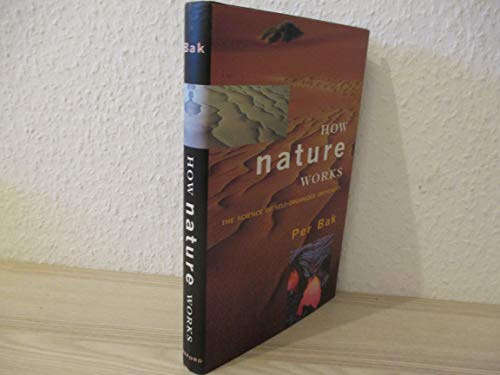
Synopsis
Can a theory of complex systems really explain how nature works? And what form would such a theory take? While many theories have been proposed to describe individual complex systems, self-organized criticality is the first general theory of complex systems with a firm mathematical foundation. This book, written by the discoverer of self-organized criticality, describes for the general reader a concept that has become increasingly important in science. Many seemingly disparate aspects of the world, from the formation of the landscape to the process of evolution to the action of nervous systems to the behaviour of the economy all share a set of simple, easily described properties. These are often described as emergent properties and Per Bak has devised the example of the sandpile to illustrate some of their key features, such as "avalanching". Bak argues that these properties are all so similar that they look to be manifestations of a single principle, a Newton's Law of complex behaviour. Further, he claims that self-organized criticality, the spontaneous development of systems to a critical state, is the key to such a principle. Looking at applications for both science and social science, the book offers a glimpse into the science of the future.
Les informations fournies dans la section « Synopsis » peuvent faire référence à une autre édition de ce titre.
Présentation de l'éditeur
Self-organized criticality, the spontaneous development of systems to a critical state, is the first general theory of complex systems with a firm mathematical basis. This theory describes how many seemingly desperate aspects of the world, from stock market crashes to mass extinctions, avalanches to solar flares, all share a set of simple, easily described properties. " . . . a 'must read' . . . Bak writes with such ease and lucidity, and his ideas are so intriguing . . . essential reading for those interested in complex systems . . . it will reward a sufficiently skeptical reader" -NATURE " . . . presents the theory (self-organized criticality) in a form easily absorbed by the non-mathematically inclined reader" -BOSTON BOOK REVIEW "I picture Bak as a kind of scientific musketeer; flamboyant, touchy, full of swagger and ready to join every fray . . . His book is written with panache. The style is brisk, the content stimulating. I recommend it as a bracing experience" -NEW SCIENTIST
Biographie de l'auteur
Per Bak is a professor in the Physics Department of Brookhaven National Laboratory. He has published over 150 papers, including articles in Scientific American and New Scientist.
Les informations fournies dans la section « A propos du livre » peuvent faire référence à une autre édition de ce titre.
Autres éditions populaires du même titre
Résultats de recherche pour How Nature Works. The Science Of Self-Organized Criticality
How Nature Works: The Science of Self-organized Criticality
Vendeur : AwesomeBooks, Wallingford, Royaume-Uni
Hardcover. Etat : Very Good. How Nature Works: The Science of Self-organized Criticality This book is in very good condition and will be shipped within 24 hours of ordering. The cover may have some limited signs of wear but the pages are clean, intact and the spine remains undamaged. This book has clearly been well maintained and looked after thus far. Money back guarantee if you are not satisfied. See all our books here, order more than 1 book and get discounted shipping. N° de réf. du vendeur 7719-9780198501640
Acheter D'occasion
Quantité disponible : 2 disponible(s)
How Nature Works: The Science of Self-organized Criticality
Vendeur : Bahamut Media, Reading, Royaume-Uni
Hardcover. Etat : Very Good. This book is in very good condition and will be shipped within 24 hours of ordering. The cover may have some limited signs of wear but the pages are clean, intact and the spine remains undamaged. This book has clearly been well maintained and looked after thus far. Money back guarantee if you are not satisfied. See all our books here, order more than 1 book and get discounted shipping. N° de réf. du vendeur 6545-9780198501640
Acheter D'occasion
Quantité disponible : 1 disponible(s)
How Nature Works: The Science of Self-Organized Criticality
Vendeur : Anybook.com, Lincoln, Royaume-Uni
Etat : Good. This is an ex-library book and may have the usual library/used-book markings inside.This book has hardback covers. Clean from markings. In good all round condition. Dust jacket in fair condition. Please note the Image in this listing is a stock photo and may not match the covers of the actual item,650grams, ISBN:9780198501640. N° de réf. du vendeur 9193917
Acheter D'occasion
Quantité disponible : 1 disponible(s)
How Nature Works the Science of Self-Organised Criticality
Vendeur : Webbooks, Wigtown, Wigtown, Royaume-Uni
Paperback. Etat : Very Good. No Jacket. First Edition. Clean bright tight copy. Previous owner's name on front free end paper otherwise appears unused. C00002292. N° de réf. du vendeur C00002292
Acheter D'occasion
Quantité disponible : 1 disponible(s)

